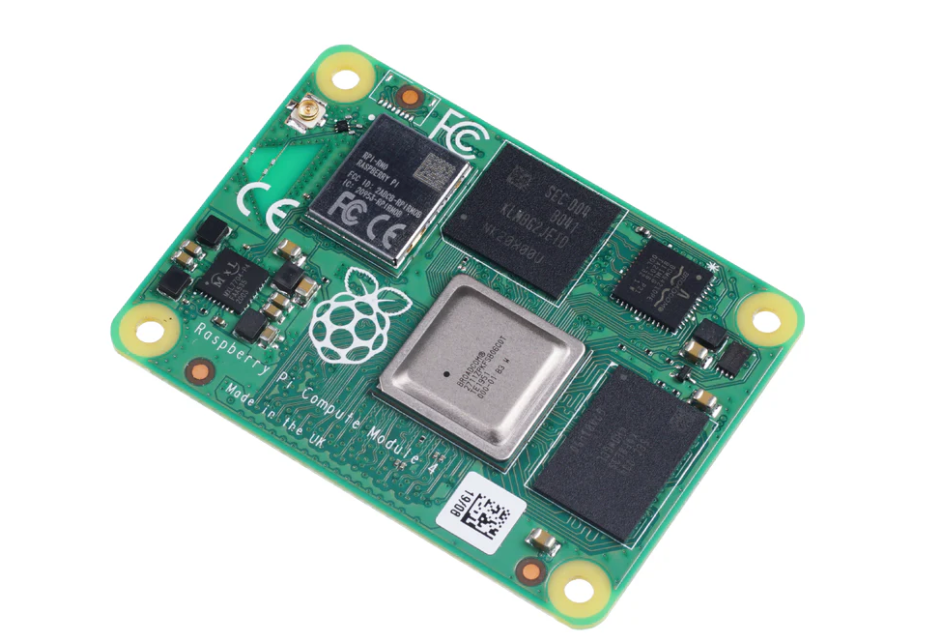- By Sam Singh
- Updated Oct 14, 2025

If you’ve ever tinkered with single-board computers, you’ve probably come across the Raspberry Pi 4—a favourite among hobbyists, educators, and even small businesses. But when projects become more advanced, many makers and engineers start considering the Raspberry Pi Compute Module series—particularly the Compute Module 4 (CM4).
Both boards are powered by the same processing heart, but they’re designed with very different goals in mind. Choosing between them isn’t just about specs—it’s about how you plan to use them. Let’s break it down so you can decide which one makes sense for your project.
What Are These Two Boards Anyway?
-
Raspberry Pi 4: A compact, all-in-one computer with HDMI ports, USB slots, Ethernet, Wi-Fi, and GPIO pins. It’s ready out of the box for desktop-like use, coding, and DIY projects.
-
Raspberry Pi Compute Module 4: A stripped-down, modular version of the Pi 4 that plugs into a carrier board. It has the same processor, but fewer built-in ports. Instead, it gives manufacturers and advanced users the flexibility to design custom boards and embed the Pi into products.
Think of the Pi 4 as a pre-built house ready to move into. The Compute Module 4, on the other hand, is like a kit where you can decide the floor plan, wiring, and finishings.
Performance: Are They Really That Different?
On paper, both use the Broadcom BCM2711 quad-core ARM Cortex-A72 processor. Performance is nearly identical, whether you’re running Linux, controlling sensors, or streaming media.
-
RAM options: Both come in 2GB, 4GB, and 8GB variants.
-
Storage: Pi 4 uses a microSD card. CM4 offers models with onboard eMMC storage (8–32GB) or none at all (you add storage via your board).
-
Graphics: Both can handle 4K video and everyday computing tasks.
So in terms of raw power, there’s no real winner—it’s a tie.
Connectivity and Ports: Plug-and-Play vs Customisation
This is where the differences matter:
-
Raspberry Pi 4: Comes with everything—USB 3.0/2.0 ports, HDMI, Ethernet, audio jack, Wi-Fi, Bluetooth. Perfect for anyone who wants a “ready-to-go” setup.
-
Compute Module 4: No standard ports. Instead, it exposes interfaces (like PCIe, dual HDMI, USB, MIPI camera/display) through a connector. You’ll need a carrier board or your own custom PCB to access these.
If you love plugging in peripherals right away, Pi 4 is the winner. If you’re building a kiosk, smart appliance, or IoT device, CM4 gives you the freedom to choose exactly what you need.
Form Factor: Size and Flexibility
-
Raspberry Pi 4: Credit-card sized. Handy for prototyping, personal servers, or classrooms.
-
CM4: About half the size, but depends on the carrier board. Its compact footprint is ideal for embedding in small enclosures where space is tight.
Who Should Choose Raspberry Pi 4?
You’ll love the Pi 4 if:
-
You’re a beginner learning coding, electronics, or robotics.
-
You want a budget desktop replacement.
-
You’re setting up a media centre, retro gaming console, or personal cloud.
-
You like “plug it in and it works” convenience.
In short, Pi 4 is user-friendly and built for general-purpose computing.
Who Should Choose the Compute Module 4?
The CM4 shines when:
-
You’re designing a custom product (industrial machine, vending kiosk, smart appliance).
-
You need eMMC storage for reliability (no more SD card corruption).
-
You require PCIe for high-speed interfaces like NVMe SSDs or extra networking.
-
You want to control every detail of your hardware footprint.
This is why many commercial projects—robot vacuum cleaners, digital signage, even 3D printers—use the Compute Module instead of the standard Pi.
Cost Considerations
-
Raspberry Pi 4: Usually cheaper upfront since it includes everything.
-
CM4: May cost less per unit but requires an I/O board, which can raise the total cost. For large production runs, however, CM4 becomes more economical because manufacturers can design their own carrier boards.
Real-World Examples
-
Pi 4: Home NAS server, Kodi media box, student coding lab.
-
CM4: Embedded in smart home hubs, network routers, drones, and medical devices.
Future-Proofing
Both boards will be supported for years, but CM4 has an edge in industrial longevity. Raspberry Pi guarantees longer availability for Compute Modules because companies build commercial products around them. If you’re planning something long-term, that stability matters.
So, Which One Should You Pick?
-
Pick the Raspberry Pi 4 if you want to experiment, learn, or build personal projects.
-
Pick the Raspberry Pi Compute Module 4 if you’re aiming for commercial, industrial, or product-level integration.
At the end of the day, it’s not about which board is “better”—it’s about which board is right for your purpose.
Final Thoughts
The Raspberry Pi Foundation designed these two boards for different audiences. The Pi 4 makes computing accessible to everyone, while the Compute Module 4 opens doors for engineers and innovators who want total control.
If your project is a weekend build or learning exercise, go with the Pi 4. If you’re thinking big—something scalable, professional, or product-focused—the CM4 is your ticket.
